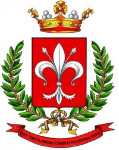Porta Santa Croce
Ultimo aggiornamento: 23 ottobre 2023, 11:55
Porta Santa Croce
La porta est della Città, risalente al I sec. a.C. circa, probabilmente era l’ultima propaggine del decumano, tanto che – seguendo questa direttrice - più volte si sono individuate tracce di basolato della antica Via Latina, anche poco sotto l’attuale piano stradale.
In maniera simile alla vicina Porta Casamari era costituita da un doppio arco, di cui si tramanda memoria fino a prima della costruzione della soprastante Via Circonvallazione.
Nei paraggi si trova quella che si pensa essere la porta di sortita della cittadella, detta Grottapara, la cui stretta galleria sotterranea si dirige verso l'Acropoli, ma è bloccata da un crollo a pochi metri dall'ingresso.
Giace quindi inutilizzabile da tempo immemore, e forse si allude ad essa quando nel libro V degli Statuti di Ferentino (cap. LXXIV) si annota un “Quod specus claudatur”, frase di incerta collocazione, che potrebbe riferirsi al fatto che “quella grotta è chiusa”.
Scendendo la scala, è possibile costeggiare un tratto di mura ciclopiche.
ENG The east gate of the city, dating back to the first century b.C. circa, was probably connected to Porta S. Agata via the last ramification of the decumanus: following this route, traces of the paving of the ancient Via Latina emerge from the current road level.
The gate consisted of a double archway, that was still standing during the construction of the upper Circonvallazione (ring road), and it is similar - though smaller - to the nearby Porta Casamari.
It is located near what is thought to be the secret exit gate of the citadel, called Grottapara, whose narrow underground gallery heads towards the Acropolis, but is blocked by a collapse a few meters from the entrance.
It has therefore been left unusable since centuries, and perhaps the Governor alluded to it when writing in book V of the Statutes of Ferentino (chap. LXXIV) a phrase of uncertain collocation: "Quod specus claudatur", that means "that cave is closed" .
Going down the staircase, it is possible to observe closely a stretch of cyclopean walls.

